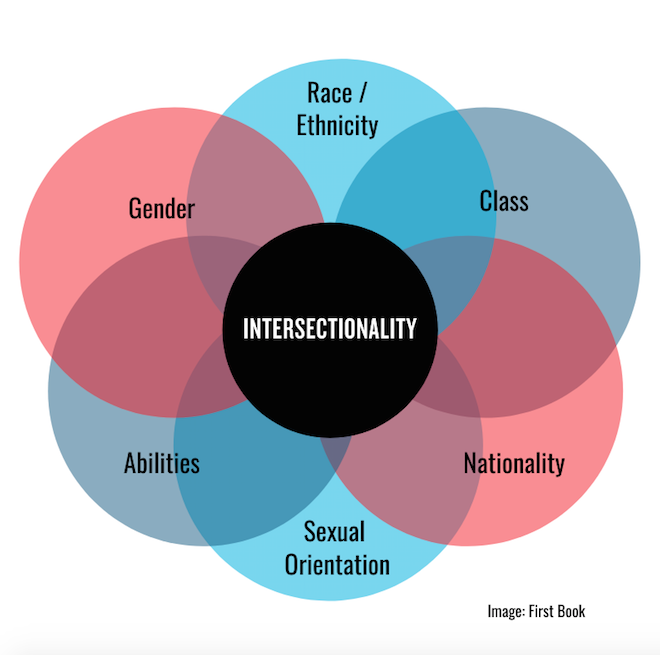The 4 "I"s of Oppression / Intersectionality 101
The reading explains that there are four defining aspects of oppression:
1. Internalized oppression (individually)
2. Interpersonal oppression (socially)
3. Institutional oppression (how oppression is reinforced)
4. Ideological oppression (how oppression perpetuates across time & space)
Each of these four "I"s can apply within education settings. For example, internalized oppression refers to how belief systems are internalized and contribute to feelings of either false supremacy or false deficiency. One instance in which internalized oppression could possibly be seen manifesting in schools is when, for instance, a student, who is also a person of color, feels pressured to over-achieve in order to be valued by their classmates and teachers. They may feel a need to go above and beyond because of the fear that they may not be truly seen otherwise. Another example of internalized oppression in schools could be when a white teacher is wrongfully doubtful of a student's intelligence solely due to race, economic status, etc.
On the other hand, interpersonal oppression describes how internalized oppression is then expressed, whether that be intentionally or accidentally. This can include violence, comments, and other expressions between groups and individuals that result in the target feeling dehumanized. In schools, this might manifest in the form of students bullying other students for not belonging to the dominant culture.
Institutional oppression explains how oppression occurs through social practices, including policies and laws. The reading even describes an example pertaining directly to education settings: "One example is the practice among many colleges of requiring a minimum college entrance exam score from successful candidates... As a policy and practice, test scores inequitably keep low income - particularly Black, Indigenous, or other people of color - students from accessing educational credentials and related job opportunities" ("The Four 'I's of Oppression" 3).
Finally, ideological oppression refers to the systems rooted deep within our society that allow people to dehumanize individuals and groups. Ideological oppression overarches individual, interpersonal, and institutional oppression. Therefore, examples of ideological oppression in school settings could also fall under individual, interpersonal, and institutional oppression.
Ultimately, intersectionality also ties into the four "I"s of oppression. Intersectionality demonstrates how one's identities can intersect, as each person has multiple facets of identity that help to define who they are. This applies to the four "I"s of oppression because individuals who are part of marginalized groups are forced to be acutely aware of intersectionality, and how their identities apply to intersectionality. In contrast, individuals who are not part of marginalized groups have the option to ignore intersectionality, which acts as another form of privilege.





I like how you related each type of oppression to an academic setting. I also like how you explained how ideological oppression is at the center of all oppression.
ReplyDeleteFrom Jess: Olivia: Your example of interpersonal oppression through bullying is a powerful way to show
ReplyDeletehow these issues manifest in everyday school interactions. The point about institutional
oppression through college entrance exam policies is very relevant. It underscores how
systemic practices can disadvantage marginalized groups. I like how you tied ideological
oppression to the broader societal systems. It’s important to understand how these deep-rooted
beliefs influence individual and institutional actions.